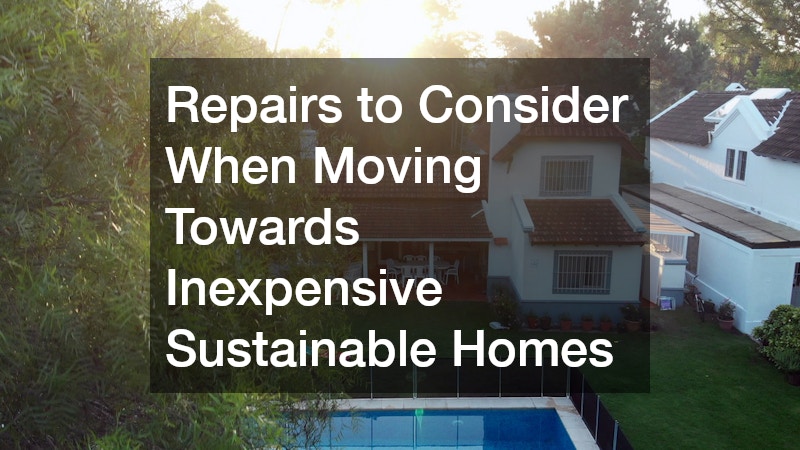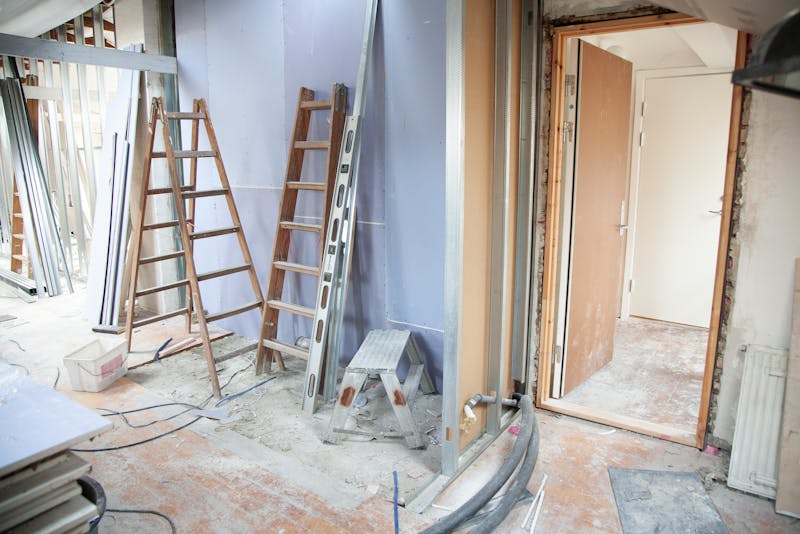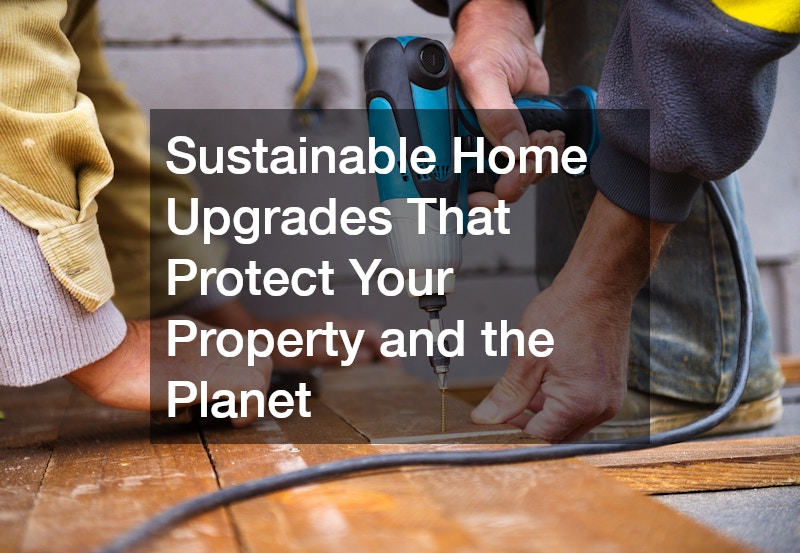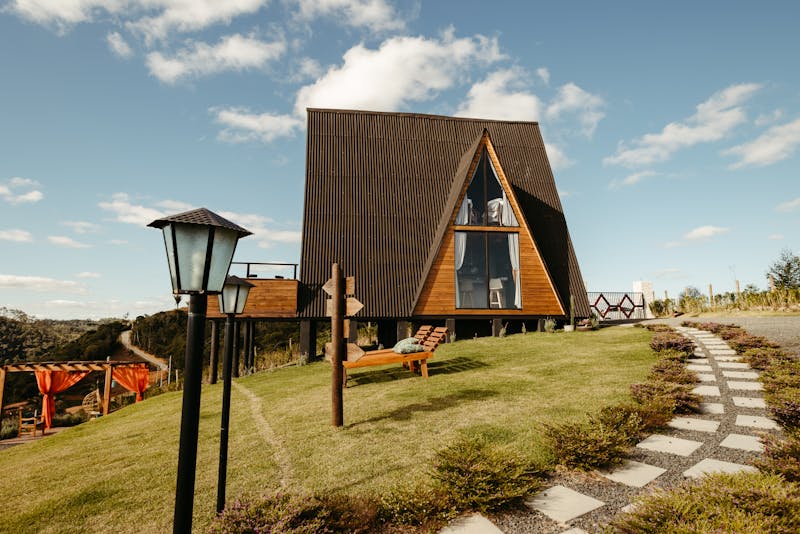The movement toward sustainable living has gained significant momentum in recent years. Many homeowners are exploring ways to reduce their environmental footprint while also cutting costs. Inexpensive sustainable homes are an ideal solution, offering eco-friendly features without a hefty price tag. Transitioning to such a home, however, often requires strategic repairs and upgrades to maximize efficiency, comfort, and sustainability.
From basic plumbing repairs to modern mini splits for energy-efficient heating and cooling, these improvements can make a significant difference in both cost savings and environmental impact. Understanding the necessary repairs and knowing where to invest your time and resources ensures that your move toward a sustainable lifestyle is smooth and effective. Each home is unique, and the types of repairs needed can vary depending on its age, location, and previous maintenance history.
This article delves into the essential repairs to consider when making your home both affordable and sustainable, covering everything from insulation to energy-efficient appliances and roof repair strategies. It also provides guidance on how to integrate eco-friendly practices into your home improvement projects, making sustainable living practical, achievable, and cost-effective.
What Are Inexpensive Sustainable Homes?
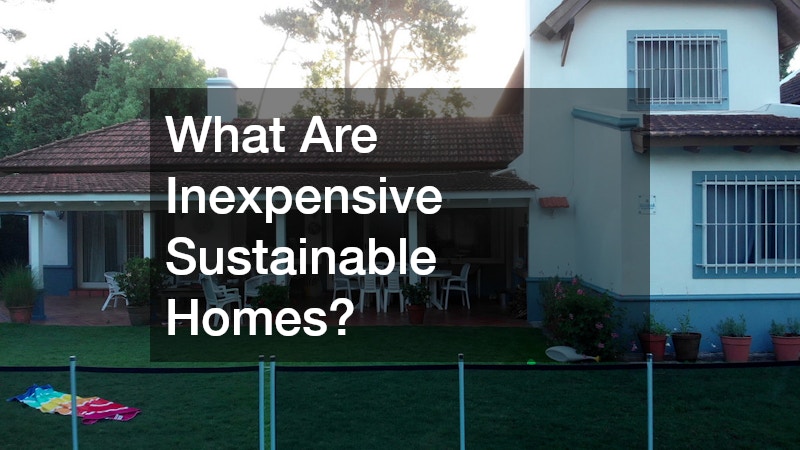
Definition and Overview
Inexpensive sustainable homes are residences designed to minimize environmental impact while remaining affordable for homeowners. Sustainability in housing encompasses energy efficiency, resource conservation, and the use of environmentally friendly materials. These homes often incorporate renewable energy sources, efficient insulation, and durable construction materials that reduce long-term maintenance costs.
The affordability aspect doesn’t mean compromising on comfort. Instead, it focuses on using cost-effective solutions such as concrete repairs with recycled materials, eco-friendly insulation, and efficient heating and cooling systems like mini splits, which provide targeted climate control without excessive energy use. Many homeowners find that investing in these strategic repairs pays off over time, not only in reduced utility bills but also in increased property value and a lower environmental footprint.
Sustainable homes often integrate systems that reduce dependence on nonrenewable resources. Simple measures such as fixing leaky faucets or performing plumbing repairs can save substantial amounts of water over time, while more complex improvements like installing energy-efficient appliances and efficient heating systems contribute to long-term sustainability. The combination of affordability and eco-friendliness makes these homes highly attractive to families, first-time buyers, and environmentally conscious individuals.
Key Characteristics
Inexpensive sustainable homes are characterized by energy efficiency, water conservation, durable materials, and low maintenance needs. Energy-efficient homes minimize electricity and heating demands through the use of well-insulated walls, modern windows, and efficient HVAC systems. Water conservation is achieved by incorporating low-flow fixtures, rainwater harvesting systems, and efficient plumbing networks. These systems often require careful attention and periodic water pump replacement or clogged drain repair to maintain optimal functionality.
Durable materials are essential in reducing frequent repair needs. Whether it’s roll up door repair, concrete repairs, or replacing aged roof materials, sustainable homes utilize long-lasting components to extend the life of the property while keeping costs down. Low maintenance is a significant advantage, as homeowners can focus on improvements and lifestyle rather than constant repairs. Systems like drain cleaning and preventative plumbing repairs ensure that the home operates efficiently for years.
Popularity and Demand
The popularity of inexpensive sustainable homes is on the rise due to a combination of environmental awareness, rising energy costs, and the growing desire for financial efficiency. Homeowners increasingly recognize that thoughtful investment in sustainability reduces long-term expenses and contributes to global environmental preservation. Many families are choosing to upgrade their living spaces through bathroom renovation using eco-friendly fixtures or local pool renovation projects that incorporate energy-efficient pumps and water-saving systems.
This trend is not limited to new homes; older properties can also be transformed into sustainable residences with careful repairs and strategic updates. The growing demand for affordable and environmentally friendly housing reflects a cultural shift toward conscious living, and it highlights the need for practical, achievable solutions in everyday home maintenance.
How Insulation Can Make Your Home More Sustainable
Types of Sustainable Insulation Materials
Proper insulation is one of the most critical aspects of sustainable living. It reduces energy consumption for heating and cooling while improving indoor comfort. Sustainable insulation materials include recycled cellulose, which is made from recycled paper and treated to resist pests and fire, providing an effective barrier against heat loss. Sheep’s wool is another eco-friendly option, offering natural insulating properties and moisture regulation, while cork insulation provides a renewable solution that resists mold and moisture buildup.
Selecting the right insulation often goes hand-in-hand with other repairs, particularly plumbing repairs, to ensure walls remain dry and free from leaks. Moisture intrusion can compromise insulation performance, reducing energy efficiency and increasing the likelihood of mold or mildew growth. Ensuring a dry, well-maintained environment protects your investment and extends the lifespan of insulation materials.
Insulation Installation Techniques
Correct installation of insulation is as important as the materials themselves. Spray foam insulation creates an airtight seal, reducing drafts and minimizing energy loss. Blown-in insulation works well for retrofitting existing walls, providing coverage in areas where traditional batt insulation might be difficult to install. Batt insulation remains a standard option in new construction and offers a straightforward method for creating a well-insulated living space.
While installing insulation, homeowners may encounter plumbing issues such as blocked pipes or clogged drain repair needs. Addressing these problems simultaneously ensures that insulation functions optimally and prevents future damage from leaks or water accumulation.
Benefits of Proper Insulation
Investing in insulation delivers multiple benefits beyond energy savings. It improves indoor comfort by maintaining consistent temperatures, reduces noise from external sources, and contributes to overall home sustainability. Proper insulation also helps extend the life of energy-efficient systems like mini splits, reducing wear and tear from frequent cycling. A well-insulated home is a home that performs efficiently in all seasons, reducing reliance on energy-intensive heating and cooling methods.
Eco-Friendly Roofing Options
Types of Sustainable Roofing Materials
Sustainable roofing materials play a crucial role in energy efficiency and long-term durability. Metal roofs are highly durable, recyclable, and reflect heat, reducing cooling costs. Clay and concrete tiles offer long-lasting energy-efficient options that maintain interior comfort and resist weathering. Green roofs, which incorporate vegetation, provide natural insulation and help manage stormwater runoff, further contributing to sustainable home practices.
Each roofing type may require occasional attention, and even sustainable materials benefit from routine roof repair. Minor repairs, such as concrete repairs on the roof deck or sealing gaps, ensure the longevity of your investment and protect the home from potential leaks or structural damage.
Installation Challenges and Solutions
Installing sustainable roofing materials can pose challenges, including proper sealing, weight management, and ensuring compatibility with existing roof structures. Hiring experienced contractors and conducting careful planning mitigates these issues. By addressing roof damage proactively, homeowners avoid more extensive repairs in the future, saving both time and money. Even with the most durable materials, routine inspection and maintenance are essential to protect the home’s energy efficiency.
Long-term Savings and Benefits
Investing in eco-friendly roofing reduces energy consumption by improving insulation and minimizing heat transfer. It also increases property value, enhances curb appeal, and prolongs the lifespan of the home. Sustainable roofs often require less frequent replacement, reducing both material costs and labor, and minimizing the environmental impact associated with construction waste. When combined with other upgrades such as mini splits and energy-efficient windows, sustainable roofing creates a comfortable, cost-effective living environment.
How Solar Panels Reduce Energy Costs
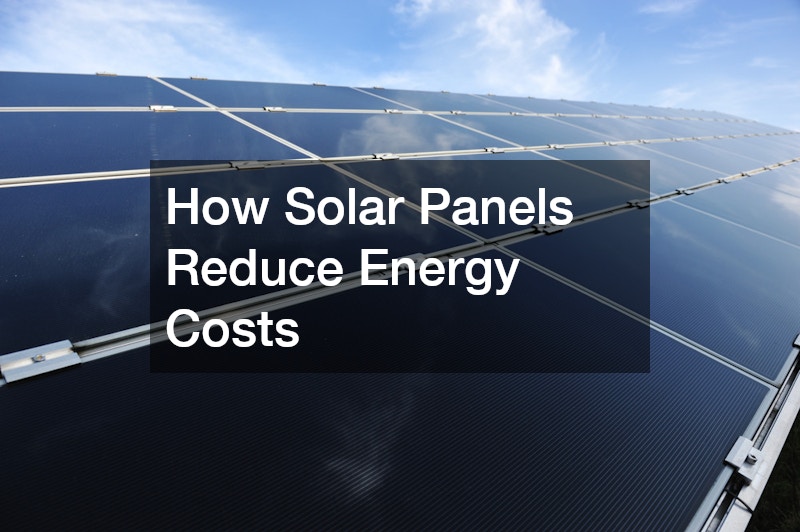
Understanding Solar Panel Technology
Solar panels harness sunlight and convert it into electricity, reducing reliance on grid energy. These systems work especially well when paired with efficient heating and cooling solutions like mini splits, which benefit from consistent and renewable power. Solar technology has evolved significantly, offering increased efficiency and durability, making it a practical choice for both new and existing homes.
Installation and Maintenance
Correct installation ensures maximum efficiency, and ongoing maintenance is critical to maintain optimal performance. Routine cleaning of panels, monitoring inverter performance, and checking wiring connections are necessary to keep the system functioning properly. Some homes may require plumbing repairs or water pump replacement to integrate solar-powered water heating systems effectively. By addressing these needs alongside installation, homeowners can ensure seamless operation and long-term sustainability.
Energy Efficiency and Cost Analysis
Solar panels offer significant long-term savings by reducing electricity bills and minimizing dependence on nonrenewable energy sources. When combined with strategic upgrades like bathroom renovation with low-flow fixtures, solar panels make sustainable living financially viable. The initial investment pays off over time through energy savings, increased property value, and reduced environmental impact.
The Role of Windows and Doors in Home Sustainability
Choosing Sustainable Window and Door Materials
Windows and doors play a crucial role in maintaining energy efficiency. Choosing sustainable materials, such as double or triple-pane windows with low-E coatings and doors made from reclaimed or recycled materials, enhances the home’s thermal performance. These upgrades help prevent energy loss, reduce heating and cooling demands, and improve indoor comfort.
Proper selection also reduces the need for roll up door repair, as durable materials withstand wear and tear more effectively than older or less sustainable options. Ensuring high-quality installations also minimizes maintenance needs and improves the longevity of windows and doors.
Installation and Weatherproofing Techniques
Correct installation is critical for preventing drafts, leaks, and water infiltration. Sealing gaps, installing weatherstripping, and maintaining proper alignment ensure optimal energy efficiency. Periodic drain cleaning around window wells or sliding doors prevents water accumulation, protecting insulation and structural components.
Enhancing Energy Efficiency
Efficient windows and doors reduce heating and cooling costs, improve indoor comfort, and prolong the lifespan of systems like mini splits. By combining high-quality materials with proper installation, homeowners achieve a significant return on investment while contributing to overall sustainability.
Incorporating Water Conservation Systems
Installing Low-flow Fixtures
Low-flow faucets, showerheads, and toilets reduce water consumption without compromising functionality. Installing these fixtures often requires careful plumbing repairs to ensure compatibility with existing piping and to prevent leaks.
Benefits of Rainwater Harvesting
Capturing rainwater for irrigation and other non-potable uses helps reduce reliance on municipal water supplies. When integrated with projects such as local pool renovation, rainwater harvesting can further enhance sustainability by reducing water waste and lowering operational costs.
Implementing Greywater Recycling Systems
Greywater systems reuse water from sinks, showers, and laundry, minimizing waste and reducing water bills. These systems may occasionally require clogged drain repair or drain cleaning to maintain efficient operation and prevent blockages.
Best Practices for Energy-Efficient Appliances

Identifying Energy Star Appliances
Energy Star-rated appliances use less electricity and water compared to standard models. Upgrading refrigerators, washing machines, and heating and cooling systems such as mini splits contributes to overall home efficiency and cost savings.
Installation Considerations
Proper installation ensures that appliances operate efficiently and reliably. Integrating systems such as water pump replacement may be necessary to optimize energy performance and water circulation.
Cost-benefit Analysis
While energy-efficient appliances may have a higher upfront cost, savings on utility bills, reduced maintenance needs, and decreased reliance on repairs such as plumbing repairs make them a worthwhile investment for sustainable living.
Choosing Sustainable Materials for Home Repairs
Evaluating Material Lifespan and Sustainability
Long-lasting materials reduce repair frequency and environmental impact. Homeowners can select recycled concrete repairs, reclaimed wood, or sustainable metals to enhance durability and sustainability.
Cost-effective Sustainable Alternatives
Affordable alternatives include recycled steel, composite panels, and eco-friendly coatings. These materials can be used for essential repairs such as roll up door repair or bathroom renovation, providing both cost-effectiveness and long-term reliability.
Availability and Suppliers
Many local suppliers now offer sustainable materials, allowing homeowners to source resources close to home. Using locally available recycled materials for concrete repairs or fixtures for bathroom renovation reduces transportation emissions and overall project costs.
Benefits of Energy-efficient Lighting
LED vs. Traditional Lighting
LED lighting consumes significantly less energy and lasts longer than incandescent bulbs. Installing LEDs throughout the home reduces energy use while complementing other sustainable upgrades.
Installation and Future-proofing
Energy-efficient lighting can be integrated seamlessly into new or renovated spaces. Smart controls and automated systems ensure that lights are only used when needed, enhancing overall efficiency. Homeowners may coordinate these upgrades with local pool renovation or bathroom renovation projects for optimal results.
Cost-saving Analysis
LEDs reduce electricity bills and maintenance needs, creating long-term savings. When combined with other sustainable home improvements, including mini splits and plumbing repairs, energy-efficient lighting strengthens the financial and environmental benefits of the property.
Maintaining an Inexpensive Sustainable Home
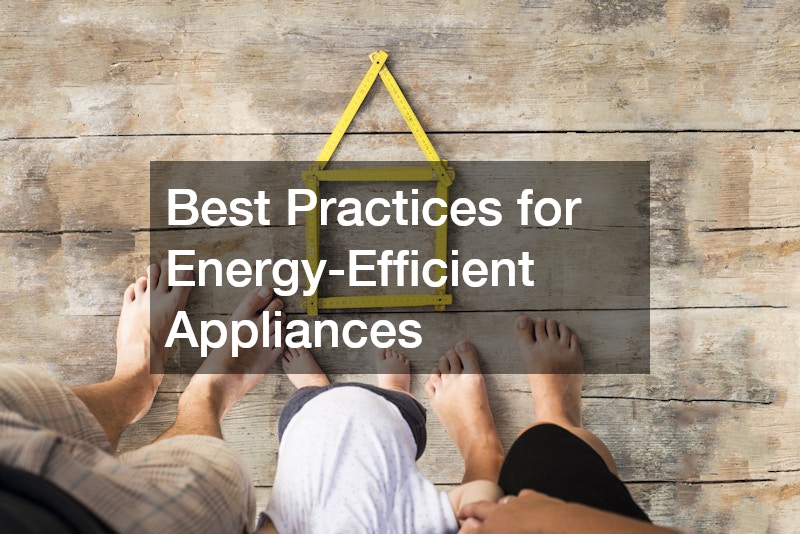
Routine Maintenance Tips
Routine inspections prevent costly repairs and maintain efficiency. Regular roof repair, drain cleaning, and timely water pump replacement ensure that the home remains functional and efficient.
Monitoring Home Efficiency
Tracking energy use, water consumption, and appliance performance allows homeowners to identify inefficiencies and address them promptly. Scheduling plumbing repairs, clogged drain repair, or concrete repairs as needed keeps the home operating at peak efficiency.
Continuous Improvement Strategies
Adopting new technologies, upgrading appliances, and performing regular bathroom renovation or installing mini splits keeps the home sustainable over time. Continuous improvement ensures that energy and water savings are maximized while maintenance costs remain manageable.
Transitioning to an inexpensive sustainable home requires thoughtful planning, strategic repairs, and sustainable upgrades. From roof repair and plumbing repairs to mini splits and concrete repairs, each improvement contributes to a more efficient and eco-friendly living environment.
By investing in insulation, roofing, water conservation, energy-efficient appliances, and durable materials, homeowners can achieve long-term savings and minimize environmental impact. Repairs like roll up door repair, clogged drain repair, and local pool renovation ensure the home remains functional, efficient, and comfortable. With ongoing maintenance and commitment to sustainable practices, inexpensive sustainable homes can provide a greener, cost-effective future for homeowners and the environment alike.
